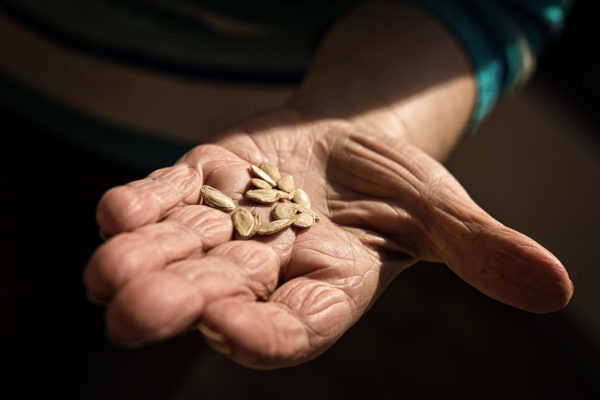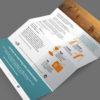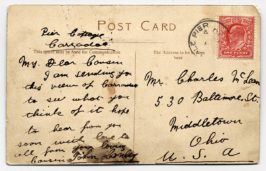Editor’s Note: the following is a guest post from John Lepp of Agents Of Good. John’s book, Creative Deviations, is a must have if you’d like to get better at raising money through the mail and email.
Before we cultivate, we must plant. And when it comes to legacy giving, the best time to plant the seeds for legacy gifts was about 20 years ago. HOWEVER… it’s not too late. You can still start today – but please start.
I wanted to share with you a few ideas on how you can plant some seeds that will help your legacy giving program start to grow immediately.
Your donors are, in fact, real humans that have their own story to tell. We do a remarkable job talking about our story all the time but often leave little space for them share bits of theirs with us.
They can also be moved by the smallest of gestures at times.
Let us never forget, your charity is a vehicle for your donor to do something that they care deeply and passionately about. They care about your cause and want to take action for something they believe in. They want to help. They want to fix something. They want to make an impact, and they want to feel good about it.
Simple.
Our job is to connect to our donor’s values and emotions in every conversation we have with them, for the first time, for the 100th time. Not just when we want to have a conversation about legacies.
So, one of the greatest lessons you can learn is that money follows value. It was one I learned a very long time ago. And when you believe that to be true, your life and your fundraising program will be transformed.
24 hours before every organization like yours was founded, a bunch of restless people got together and insisted on action. They knew they had to do more for something they believed in: human rights, social justice, saving the environment, the health of loved ones.
These are not transactions. These are things that define us as individual humans. These are things that speak to our core values that we are emotionally connected to.
Tell stories that connect to the shared values of your donors. Demonstrate how their gifts allow you to put those values into action.
Legacy seeds are tiny seeds planted in your donor’s heart that, if tended properly, will grow into something beautiful.
An effective annual program should be constantly planting these seeds. I’m talking about something beyond that basic legacy check box on the bottom right corner on the back of your tiny reply form. Seriously… that’s not how you run a legacy program.
Here are a few examples.
Hopefully you send your donors a simple but moving thank you letter that gushes some appreciation for a recent gift (please, oh please tell me you do at least this) and lets them understand the impact of that gift. You might also send it along with a receipt for that gift for taxation purposes.
I’d like you to consider adding a simple “buckslip” (so named since it literally was the same size and shape of a dollar bill) to your mailing.
The message on the buckslip should point out the importance of a legacy gift to your organization regardless of size, what a legacy gift will help do and absolutely should invite personal contact to a real human at your organization. Ensure you include a photograph of that person so the donor can see who they will be talking to if and when they call.
This is a pretty big “seed” to a donor who just made a $50 gift to the holiday appeal, but it is very intentional.
Another place to plant a legacy seed is in your donor newsletter (please, oh please tell me you an actual donor newsletter), which already gushes love and appreciation for the hard work of your donors.
This type of newsletter is a fantastic vehicle for celebrating all donors of all shapes and sizes – not (or never ideally) just the ones who come baring large cheques and entourages.
We often place articles about volunteers, monthly donors, annual donors and legacy donors on the back page where the reader is least likely to miss it.
Your donor gets to read a lovely story that shares the “why” of this donor deciding to leave or give a gift to your organization. Other donors will be nodding along to their story, recognizing bits of themselves in her words and her shared values. Once again, space should be provided to invite personal feedback.
Another opportunity in your print materials would be your gratitude report.
One example of a good gratitude report is a collection of donor voices. Undoubtedly, they will represent just a sampling of the completely normal and utterly amazing humans who support your organization!
Sharing a story of a donor or two or three and the “why” of their legacy gift is an easy way to remind donors that these types of donors are valued by your org.
Two final examples.
If you print your own membership magazine, you can hopefully find space to do some advertising for your legacy program. The ad should be direct, inspiring and share your organizational vision for the future and why legacy gifts are so important. Once again, it should invite a personal connection to a real human that is standing by to talk more about this.
Lastly, let us not forget there are a lot of other channels for reaching out to current and new potential donors for your organization. Digital options are Google Ads, Facebook, Twitter, TikTok, moving Youtube ads as well as traditional channels like press ads in community newspapers, short or long format direct response television ads again on small community channels – these are all great vehicles for planting seeds for having these types of conversations.
The next 20 years will witness humankind’s largest generation to pass to whatever greatness lies beyond these pastures – you have the beautiful privilege of allowing these inspiring people we call donors leave something remarkable behind.
The “past” truly can be a part of a glorious future.
John Lepp, is a lauded author, coveted international speaker and admired direct response expert with over 25 years of experience working with charities around the world helping fundraisers be more “human” and “vulnerable” to these other amazing humans we call donors.







2 comments on “Legacy Seeds”